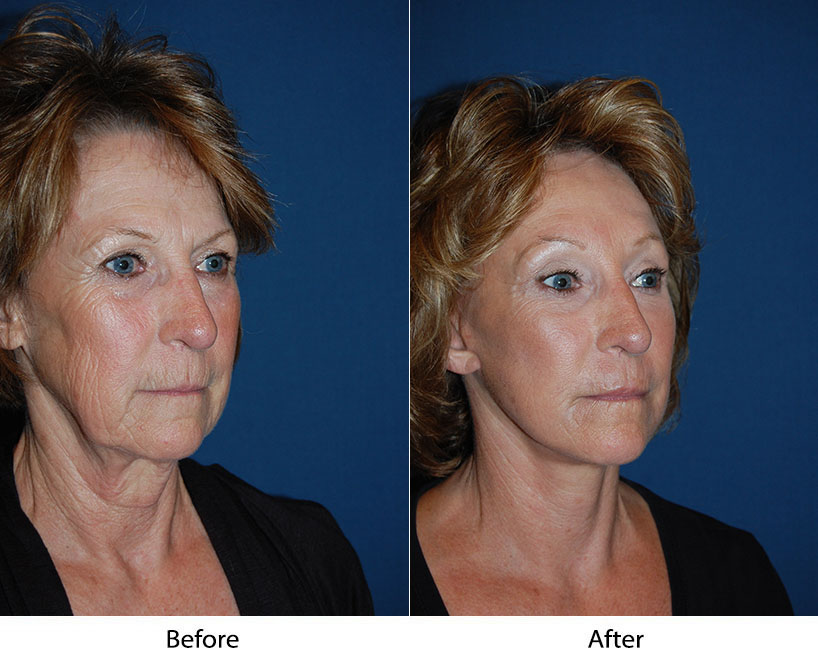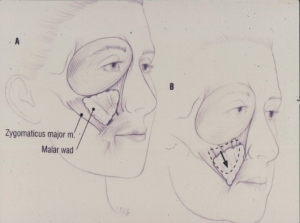Deep Plane Minituck
Dr. Freeman is Featured In

Deep Plane Mini tuck
A deep plane mini tuck involves a well-hidden incision around the ear as seen in the photo below.
Dr. Freeman authored a paper entitled “Endoscopic Malar Pad Lift” in 1996 and has been doing deep plane surgery incorporating the malar pad lift ever since; making him one of America’s first surgeons to use deep plane techniques.
Dr. Freeman has local patients in Charlotte, North Carolina, and has treated patients from all over the United States, and patients flying in from all around the world to receive his experienced facial plastic surgery skills.

Patients who are good candidates for a deep plane mini tuck have laxity of the midface, perioral area, and neck. In particular, neck laxity involves skin and muscle only and is not due to excess storage of fat and/or laxity of the submandibular gland. There are many examples of patients like this in Dr. Freeman’s photo section. Dr. Freeman uses this incision to perform a mid-face lift to correct malar pad ptosis; a technique he pioneered and published over fifteen years ago as illustrated below:


Knowing how to employ these advanced techniques results in volume rejuvenation of the midface without the need for fat injections.
Next, the parotidmasseteric fascia is lifted and the ligaments are released to perform a deep plane lift of the line of the jaw, jowl area, and marionette line of the mouth without making patients look pulled or “windblown”. Dr. Freeman was the first surgeon to incorporate both of these advanced techniques, he has been using this approach since the late 1990s; these approaches allow rejuvenation to look natural and be long-lasting. This part of the lift is illustrated below:


The neck is then lifted by lifting the lateral border of a fan-shaped muscle known as the platysma muscle after making a back-cut through the platysma muscle below the angle of the jaw as illustrated below:

Dr. Freeman’s Makeovers
Request A Consultation
Contact Us
Newsletter Sign Up
Only Faces
Center for Facial Plastic and Laser Surgery
Dr. Sean Freeman – Charlotte’s Top Facial Plastic Surgeon, 11220 Elm Lane #101, Charlotte, NC 28277
Phone: 704-543-1110


